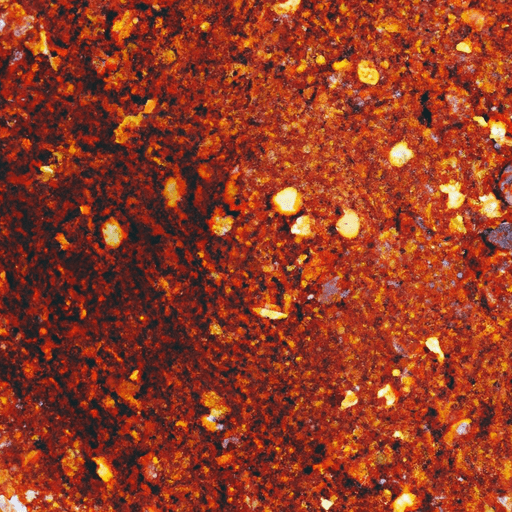Exploring the Fiery Spice: Ground Red Pepper
If you’re a fan of spicy food, ground red pepper is an ingredient that you need to have in your pantry. Also known as cayenne pepper or chili powder, this vibrant spice has a rich history and adds an irresistible kick to your favorite dishes. In this blog post, we will dive into the world of ground red pepper, exploring its taste, common uses in cooking, nutritional value, and some fascinating facts.
The Flavorful Fire
Ground red pepper is all about the heat. Its fiery nature is a result of the high concentration of capsaicin, the compound responsible for the spice in chili peppers. When cooking with ground red pepper, you can expect a powerful and intense heat that can quickly awaken your taste buds. However, it’s important to note that despite its reputation, it also adds a depth of flavor to the dishes it’s used in.
Versatile and Essential
Ground red pepper is widely used in various cuisines around the world. Its versatility makes it an essential spice in both savory and sweet dishes. Here are some popular culinary applications:
1. Savory Dishes:
- Spice Up Your Soups and Stews: Ground red pepper adds depth and heat to hearty soups, stews, and chili con carne. Just a pinch can transform a bland dish into a flavor explosion.
- Marinades and Rubs: Use it in marinades to infuse a spicy kick into meats, poultry, or seafood. It also works wonders as a dry rub for grilling or roasting.
- Sauces and Condiments: From salsas to hot sauces, ground red pepper is a key ingredient in many condiments, adding that signature fiery flavor we all love.
- Spicy Stir-Fries: In Asian cuisine, ground red pepper is often used to add heat to stir-fried dishes, giving them a tantalizing kick.
2. Sweet Treats:
- Chocolate with a Kick: Believe it or not, ground red pepper can be a fantastic addition to dark chocolate desserts, giving them a unique sweet and spicy flavor combination.
- Fruit-based Desserts: A sprinkle of ground red pepper over sweet and tangy fruits like mangoes or pineapples can elevate their taste and add a surprising twist.
Nutritional Value
Beyond its intense flavor, ground red pepper also offers some nutritional benefits. Here are a few:
- Vitamin C Boost: Ground red pepper is an excellent source of vitamin C, a powerful antioxidant that strengthens the immune system and promotes overall health.
- Metabolism Booster: Capsaicin present in ground red pepper is known to increase metabolism, aiding in weight management and promoting fat burning.
- Pain Relief: Interestingly, capsaicin can also provide temporary pain relief. It is often used topically to soothe muscle aches and joint pain.
Fun Facts and History
Here are some interesting facts about ground red pepper:
- Ground red pepper gets its vibrant color from the high concentration of a pigment called capsanthin.
- It is believed that the use of chili peppers dates back thousands of years, with evidence of their cultivation in Central America as early as 6,000 years ago.
- The Scoville scale is a measure of the spiciness of chili peppers. Ground red pepper, or cayenne pepper, typically scores between 30,000 and 50,000 Scoville Heat Units (SHU).
- Ancient cultures, such as the Mayans and Aztecs, believed that the heat of chili peppers had mystical and aphrodisiac properties.
So, the next time you want to add a fiery kick to your favorite dish, reach for ground red pepper. Embrace the spice and savor the heat! Just remember to start with a small amount if you’re new to the fiery world of chili peppers.
Note: When using ground red pepper, ensure you handle it carefully, as it can cause irritation if it comes into contact with your eyes or skin. Wash your hands thoroughly after handling.
Now it’s your turn to get creative in the kitchen! Experiment, have fun, and enjoy the vibrant and spicy flavors that ground red pepper has to offer.
Ground Red Pepper
Origin: Ground red pepper, also known as cayenne pepper, comes from the dried and ground fruits of Capsicum annuum, a chili pepper species native to Central and South America.
Common uses: Ground red pepper is known for its spicy and pungent flavor, which adds heat to various dishes. It is commonly used as a seasoning in both savory and sweet recipes, and is an important ingredient in cuisines from around the world, including Indian, Mexican, and Thai cuisines. It is used in sauces, marinades, curries, spice blends, soups, stews, and even in some desserts.
Nutritional benefits: Ground red pepper is low in calories and a good source of vitamins and minerals. It contains high levels of vitamin A, vitamin C, and vitamin E, as well as antioxidants. It also contains capsaicin, a compound that is responsible for the spicy flavor and has been linked to potential health benefits, including pain relief and weight management.
Unique properties: The spiciness of ground red pepper is measured on the Scoville scale, which assigns a numerical value to the heat of chili peppers. Ground red pepper typically ranges from 30,000 to 50,000 Scoville Heat Units (SHU), depending on the variety and processing method. The pungency of ground red pepper can vary widely, so it’s important to use it cautiously if you are not accustomed to spicy foods.
Historical significance: Capsicum annuum peppers have been cultivated for thousands of years, and they have a rich history. They were highly valued by ancient civilizations such as the Aztecs and Mayans, who used them both for culinary and medicinal purposes. After the discovery of the New World, the popularity of chili peppers spread globally, influencing the culinary traditions of many different cultures. Today, ground red pepper continues to be widely used and appreciated for its unique flavor and spiciness.




Use the share button below if you liked it.
It makes me smile, when I see it.